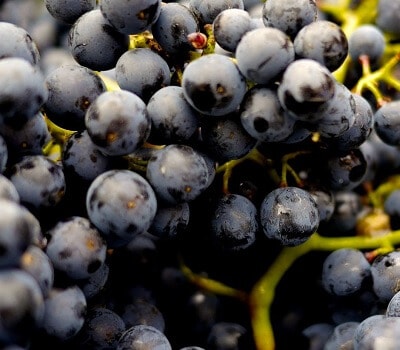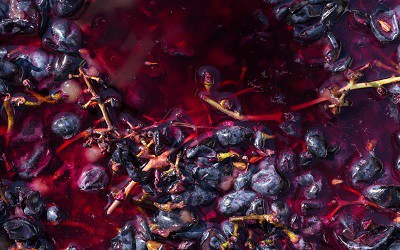Many wine lovers have a clear preference for either red or white wine, and you probably have a tendency, too. But can you name the precise reason for your preference? What are the differences between red and white wine besides their color? In this article, you will learn how they differ in production methods, taste, food pairing abilities, and health impacts.
Red wine and white wine undergo different production processes. As a result, red wines tend to be bolder, more tannic, and develop more intense aromas than whites. They are, on average, more complex and also more age-worthy.
To understand the differences in production and their results, let us discuss the single factors in detail.
WHITE WINE VS. RED WINE: COLOR
The most apparent difference between red wine and white wine is its color.

Red wines are made from red grapes, such as Cabernet Sauvignon or Merlot. Their colors range from pale, pinkish-red to deep purple. In general, the longer a red wine aged, the darker and deeper its color will be.
On the other hand, white wines are made from white (or rather green) grapes like Chardonnay or Sauvignon Blanc. But actually, white wine isn’t white. When young and crisp, it’s pale straw-colored. Some whites, like Spanish Verdejo wines, are almost colorless so that you can see through them. More vibrant whites that aged in oak barrels are golden and sometimes even pale brown.
WHITE WINE VS. RED WINE: CHARACTERISTICS AND TASTE
All wines have specific characteristics that define the drinking experience. These include the level of tannins, acidity, sweetness, alcohol content, and wine body. While every wine can have unique characteristics that differ from the average experience, some common similarities allow you to distinguish red wines from white wines.
White Wine vs. Red Wine: Tannins
Tannins are the components of wine that add bitterness and astringency. When they react with the saliva in your mouth, they give you this exciting drying sensation.
They derive from both red and white grapes, but they’re concentrated in their skins and seeds. As winemakers separate white grape juice from the solids after crushing the grapes, white wine contains only a small tannin level. Some of them aren’t tannic at all. Red wine, on the other hand, often is medium to high in tannins.
White Wine vs. Red Wine: Acidity
Acidity gives a wine its sour and tart taste. Wines that are high in (detectable) acidity are often described as refreshing or crisp.
The acidity in grapes primarily depends on the varietal, but the climate can affect it. Warmer climates and a longer ripening process result in less acidity. On the other hand, wines from cold climates usually are high in acidity.
When wine ages, its acidity softens. And as red wines tend to age longer than whites, they’re usually lower in acidity. Besides, the tannins in red wines can mask acidity, so it’s harder to detect.
White Wine vs. Red Wine: Alcohol Content
The alcohol content in wine is a result of the amount of sugar in the grapes. During the fermentation process, this sugar turns into alcohol. But the harvest of red grapes takes place later in the year than the harvest of white grapes. So they’re riper and contain more sugar that can ferment into alcohol. Thus, red wine usually is stronger in alcohol than white wine.
White Wine vs. Red Wine: Sweetness
The residual sugar also determines the sweetness of a wine. But its tannins, acidity, and alcohol content affect the perceived sweetness as well.
Both red wines and white wines can be very sweet or very dry, depending on the varietal and production processes. So there is no carved-in-stone rule to determine a wine’s sweetness by its color.
White Wine vs. Red Wine: Wine Body
Finally, wines differ in body. Or in other words, they give you different mouthfeels. Reds tend to have a fuller body. That means they have a high viscosity and feel thick and, in some cases, chewy on your palate. White wines usually have a lighter body and provide a fresh and crisp experience. In some cases, their viscosity is even comparable to water.
White Wine vs. Red Wine: Flavors And Aromas
White wines often have light and fruity flavors. You can sense green, citrus, or exotic fruits, including apple, pear, lemon, orange, grapefruit, peach, melon, and pineapple. Other common aromas are vegetables like asparagus and green bell pepper, as well as herbal or flowery flavors. Some whites also have mineral notes that might remind you of chalk or flint.
Reds tend to offer a wider variety of aromas. They often contain berry flavors, such as strawberry, raspberry, blackberry, currant, cherry, or plumbs. Aged red wines develop wooden aromas like oak or cedar and spicy notes of vanilla, cinnamon, or black pepper. Besides, you can experience tobacco, black tea, leather, or chocolate.
WHITE WINE VS. RED WINE: PRODUCTION PROCESS
The distinctions in color and taste result from differences in the five steps of the winemaking process:
First of all, red grapes are harvested later in the year than white grapes. So they have more time to accumulate sugar, which can ferment into alcohol.
During the crushing, you can notice another vital difference: Winemakers separate the juice of white grapes from the seeds, stems, and skins. For red grape juice, they don’t.
The fermentation process itself differs too. As the solids add flavor, tannins, and color to red grape juice, this distinction is one of the main factors for the differences in taste and look that we’ve already discussed.

Besides, the fermentation of white wine must happen at lower temperatures to preserve fruit and flower flavors. In contrast, red grape juice ferments at higher temperatures. And higher temperatures increase the speed by which the must absorbs color and tannins from the solids.
By the way, in some cases, vintners follow red wine techniques when processing white grapes: They let the white grapes ferment together with the solids. The result is an orange-colored wine.
Finally, the aging process of white and red wine differs as well. White wine usually ages in steel tanks that limit its exposure to oxygen to keep it fresh and crisp. But for reds, winemakers prefer oak barrels. These containers breathe and expose the wine to more oxygen, so tannins become softer. Besides, the wine loses its floral and fruity notes but develops more smoothness and additional rich flavors such as vanilla, nuts, spices, and smoky aromas.
WHITE WINE VS. RED WINE: FOOD PAIRINGS
In general, white wines pair well with light dishes. They go with salads, poultry, fish, and seafood. White wines can also be a good match for spicy Asian foods, fruits, soft cheeses, and they are great on their own as an aperitif.
When looking for a wine to pair with richer, heavier dishes, you should go for red wines. Reds pair well with steak, chops, ragouts, roasts, and similar meat dishes. They are also great to drink with salty and spicy cheeses as well as with many sweet desserts.
WHITE WINE VS. RED WINE: HEALTH EFFECTS
Red wine is a slightly healthier drink than white wine. The reason for this difference is the production process.
As mentioned before, red wine ferments together with grape skins and seeds that contain components such as polyphenols and resveratrol. These components have antioxidant and anti-inflammatory effects. Thus, they can help protect the cardiovascular system and decrease the risk of heart disease, Alzheimer’s, and other severe conditions. Because white wine must is separated from skins and seeds, it doesn’t provide these effects. It also contains slightly fewer vitamins and minerals than red wine.
Besides, there are only small differences between red and white wine. As reds are usually higher in alcohol, they have more calories. But this discrepancy is only marginal.
In any case, the positive effects that wine can have don’t replace a healthy lifestyle. And, of course, like any other alcoholic beverage, you should drink wine moderately.
FINAL WORDS
Finding the wine that perfectly matches your preferences (or your menu) isn’t easy. But this article gives you a lot of hints to narrow down your search. You should be aware that single wines can differ significantly from the average red or white wine.
Recent Posts
Switzerland is famous not only for its beautiful landscapes and its picturesque towns but also for some food items. Especially Swiss cheese and chocolate are world-famous. But do you actually know a...
Winemaking is a sophisticated process that includes multiple steps and can take several years. Depending on the desired wine and the vintner's preferred techniques, these steps can differ. However,...

